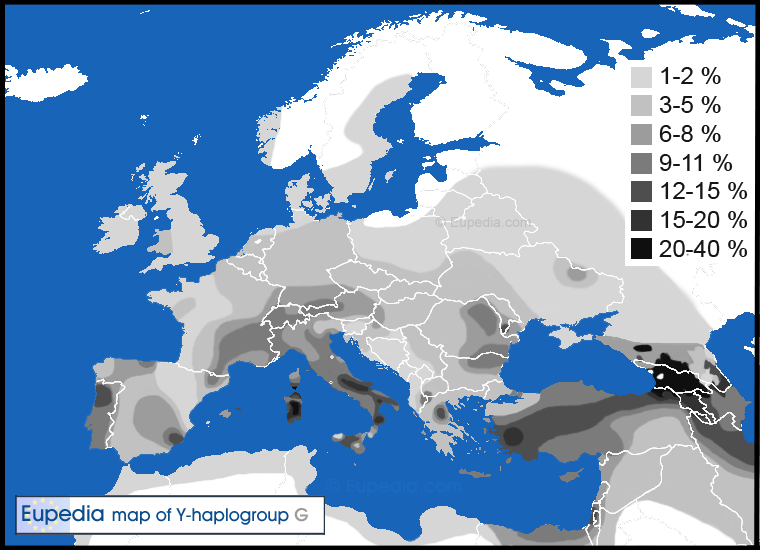rms2
Regular Member
- Messages
- 304
- Reaction score
- 11
- Points
- 0
- Location
- Central Virginia
- Ethnic group
- British/Irish
- Y-DNA haplogroup
- R-L21 (S145, M529)
- mtDNA haplogroup
- U5a2
This new scientific paper makes more sense than most.
http://www.plosbiology.org/article/info:doi/10.1371/journal.pbio.1000285
http://www.plosbiology.org/article/info:doi/10.1371/journal.pbio.1000285
The relative contributions to modern European populations of
> Paleolithic hunter-gatherers and Neolithic farmers from the Near
> East have been intensely debated. Haplogroup R1b1b2 (R-M269) is the
> commonest European Y-chromosomal lineage, increasing in frequency
> from east to west, and carried by 110 million European men. Previous
> studies suggested a Paleolithic origin, but here we show that the
> geographical distribution of its microsatellite diversity is best
> explained by spread from a single source in the Near East via
> Anatolia during the Neolithic. Taken with evidence on the origins of
> other haplogroups, this indicates that most European Y chromosomes
> originate in the Neolithic expansion. This reinterpretation makes
> Europe a prime example of how technological and cultural change is
> linked with the expansion of a Y-chromosomal lineage, and the
> contrast of this pattern with that shown by maternally inherited
> mitochondrial DNA suggests a unique role for males in the transition.


.jpg)
